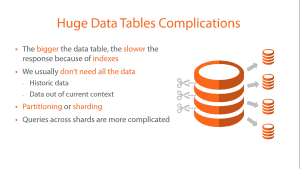Learn Building Highly Scalable Applications in Azure
September 14, 2015
In the first half of this year I've been busy producing a new course for Pluralsight, called "Building Highly Scalable Web Applications in Azure". It is a course about making a normal web applications scalable to thousands and millions of users.
In my opinion, the majority of the development tutorials that show you how to make a web application do just that: they show you how to make a demo application. This demo application isn't supposed to be production-ready nor should support high user loads. But, what happens when you need a scalable application? This is the missing piece I thought I could provide with my course.

The course takes a simple web application named Ticketer, a simple-but-complete event and ticketing MVC 5 application, and refactors it into a scalable, redundant version of itself using a variety of techniques such as storage locking removal, caching, asynchronous calls or non-relational data storage.
In the following clip you can see the load test of the application before and after the scalability improvements.
Questions? Leave a comment and I'll do my best to answer it.